AWS Solutions Architect Associate Certification
Services Database
ElastiCache
In this article, we explore AWS ElastiCache—a fully managed in-memory caching service that boosts application performance by reducing latency and offloading database operations. Before diving into ElastiCache specifics, it is important to understand the role of caching in modern application architectures.
Understanding Application Architecture and Caching
A typical application architecture includes three core components:
- Database: Stores all persistent data such as user profiles, order details, inventory records, etc.
- Application Server: Hosts business logic to process client requests and manages interactions with the database.
- Client: End-users access data via web browsers, mobile apps, or API consumers.
Each time a user interacts with an application—whether signing up or making a purchase—the client sends a request to the server, which processes the request and communicates with the database. Given that these components may reside on different networks or physical hosts, each interaction can incur significant latency. As the user base grows, the database often becomes the performance bottleneck.
To alleviate this, a caching layer is introduced between the application server and the database. An in-memory cache holds frequently accessed data—such as the top-selling items on an e-commerce site—for faster retrieval compared to disk-based storage.
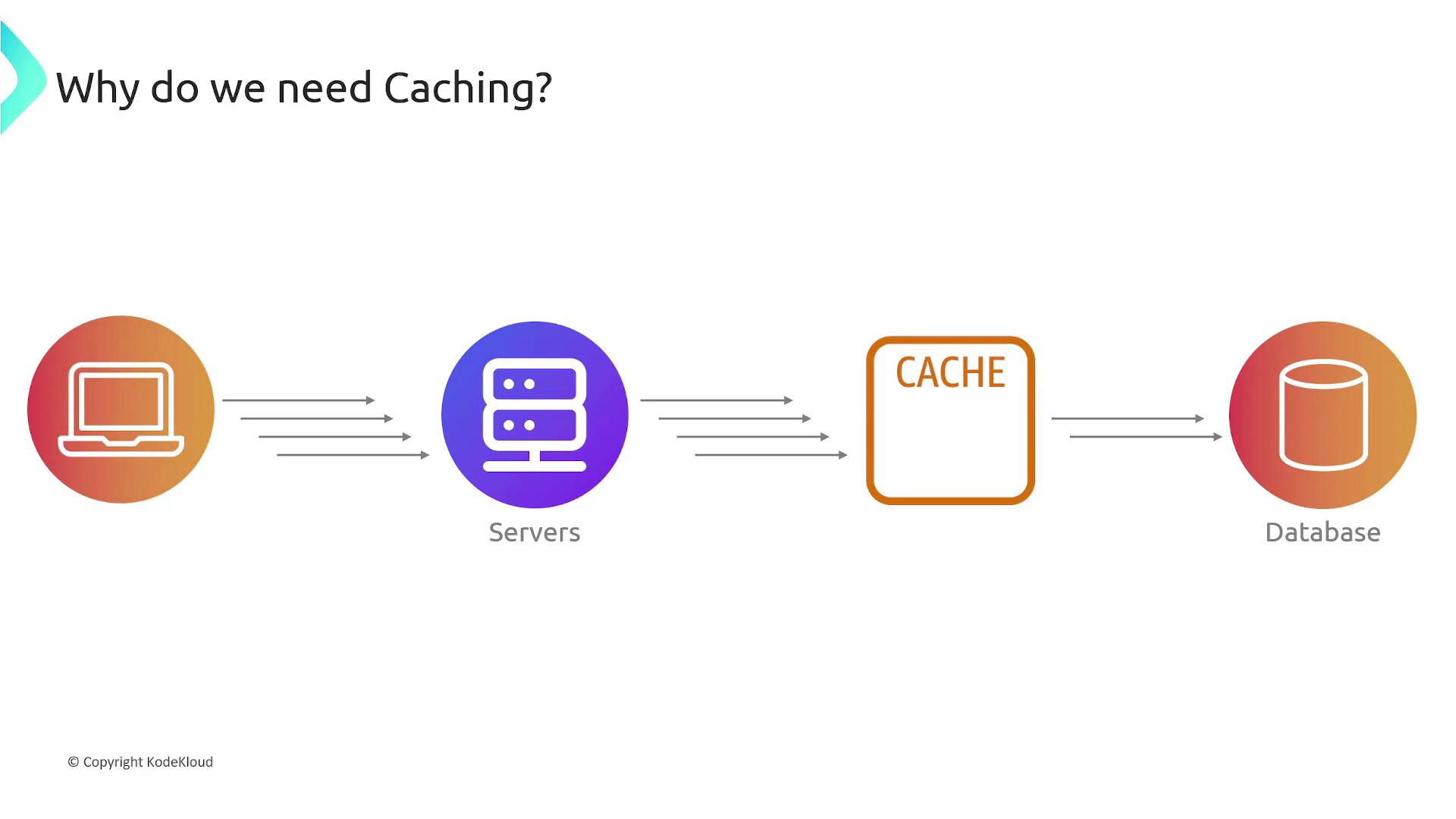
The cache significantly reduces the load on the database. When data is retrieved during the first request, subsequent requests can fetch it directly from the cache—leading to improved response times and enhanced performance under heavy loads.
Introducing AWS ElastiCache
AWS ElastiCache is a managed caching service that simplifies deploying, operating, and scaling an in-memory cache in the cloud. With enterprise-grade security and reliability, ElastiCache can easily scale to support hundreds of millions of operations per second with microsecond latency.
ElastiCache supports two leading caching engines:
- Redis: Provides advanced features such as read replicas, data persistence, encryption at rest, and a built-in Pub/Sub messaging system.
- Memcached: Offers simplicity, multi-availability zone deployments for high availability, auto discovery for managing dynamic clusters, and efficient data partitioning.
Key Benefit
With ElastiCache, you can offload frequent data requests from your underlying database, which not only reduces latency but also ensures that your application scales seamlessly under increasing demand.
Core Components of AWS ElastiCache
Cache Cluster
A cache cluster groups one or more cache nodes. It serves as the primary scalability unit in ElastiCache, and multiple clusters can operate within a single ElastiCache environment.
Node Types
Node types determine the CPU, memory, and performance characteristics of individual cache nodes. AWS offers various node types to match different application needs and workload requirements.
Cache Parameter Group
This group configures the engine-specific settings for your cache cluster, ensuring the optimal performance of your caching layer.
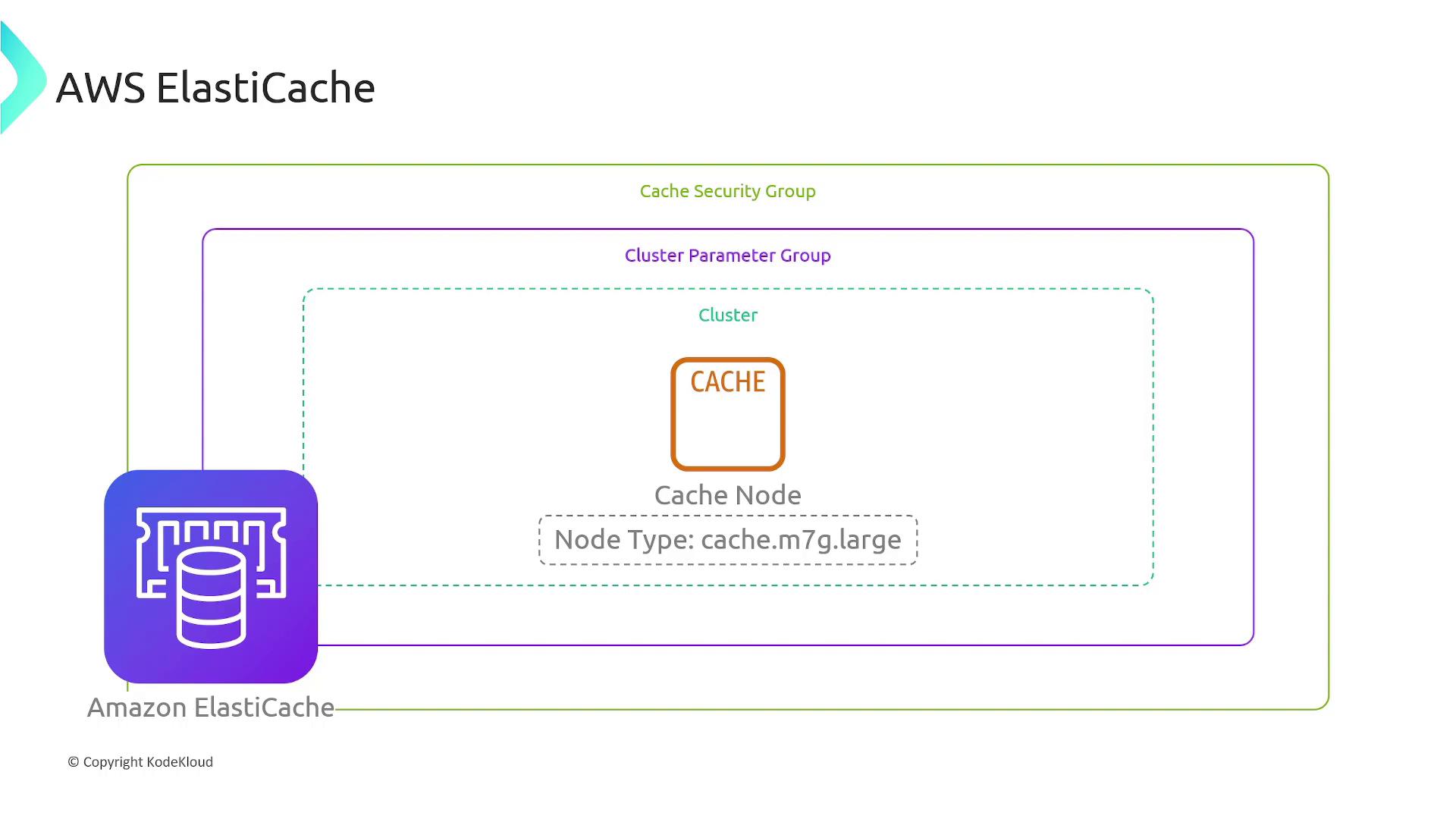
Cache Security Group
Cache security groups control network access to your cache clusters by defining inbound and outbound traffic rules. This helps safeguard your caches by ensuring that only authorized traffic has access.
Subnet Groups
Subnet groups are collections of subnets designated for your cache clusters. They allow you to control the network placement of your clusters effectively.
Engine-Specific Features
For Redis
- Read Replicas: Offload heavy read traffic to replicas, enhancing high availability.
- Data Persistence: Save in-memory data to disk for durability.
- Built-In Pub/Sub: Support real-time messaging applications.
- Encryption: Secure your data at rest with encryption features.
For Memcached
- Multi-Availability Zone Deployments: Distribute cache nodes across zones for higher reliability.
- Auto Discovery: Automatically manage nodes during scaling events.
- Data Partitioning and Sharding: Efficiently distribute data across multiple nodes.
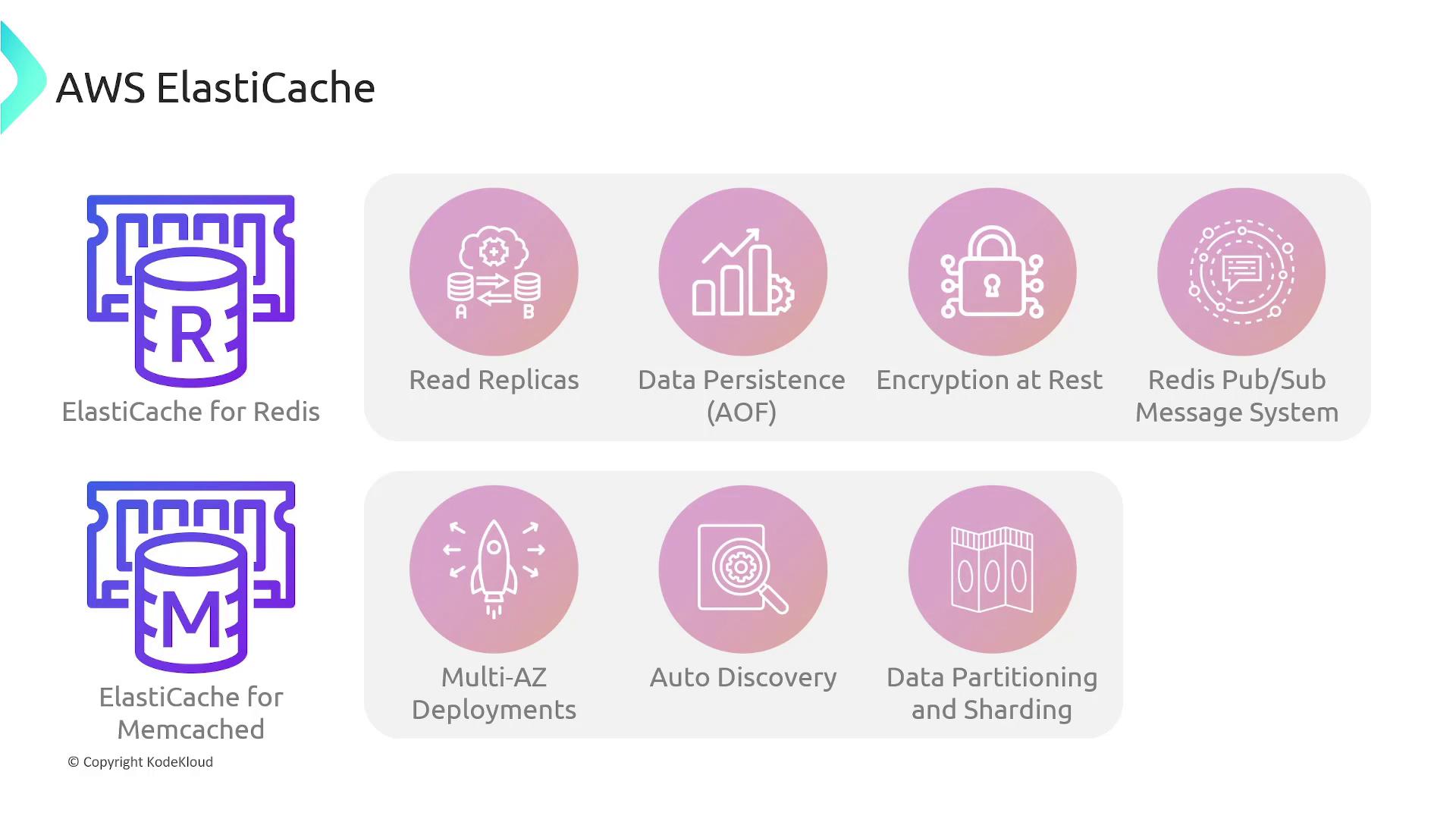
Regardless of the caching engine chosen, AWS ElastiCache takes away the administrative overhead of managing your caching environment by ensuring that it is always properly configured, secured, and scaled.
Use Cases and Integration Scenarios
ElastiCache is widely adopted to reduce the load on relational databases (like AWS RDS) by caching frequently accessed data. Common use cases include:
- Web and Mobile Applications: Enhance performance by caching session data or user-specific information.
- Real-Time Applications: Support scenarios such as online leaderboards in gaming where rapid data retrieval is essential.
- Integration with AWS Services: Seamlessly combine with AWS EKS, AWS Lambda, or Amazon Elastic Container Service (AWS ECS) to boost performance.
- Monitoring and Security: Integrate with AWS CloudWatch, AWS CloudTrail, and AWS IAM for monitoring metrics, logging activities, and managing access controls.
| Use Case | Description | AWS Integration |
|---|---|---|
| Performance Enhancement | Caching frequently accessed web and mobile application data | Integrates with AWS Lambda, AWS ECS, and AWS EKS |
| Real-Time Data Applications | Supporting dynamic applications such as leaderboards or messaging apps | Enables rapid data retrieval and scalability |
| Database Offloading | Reducing direct database queries to alleviate load | Works with relational databases like AWS RDS |
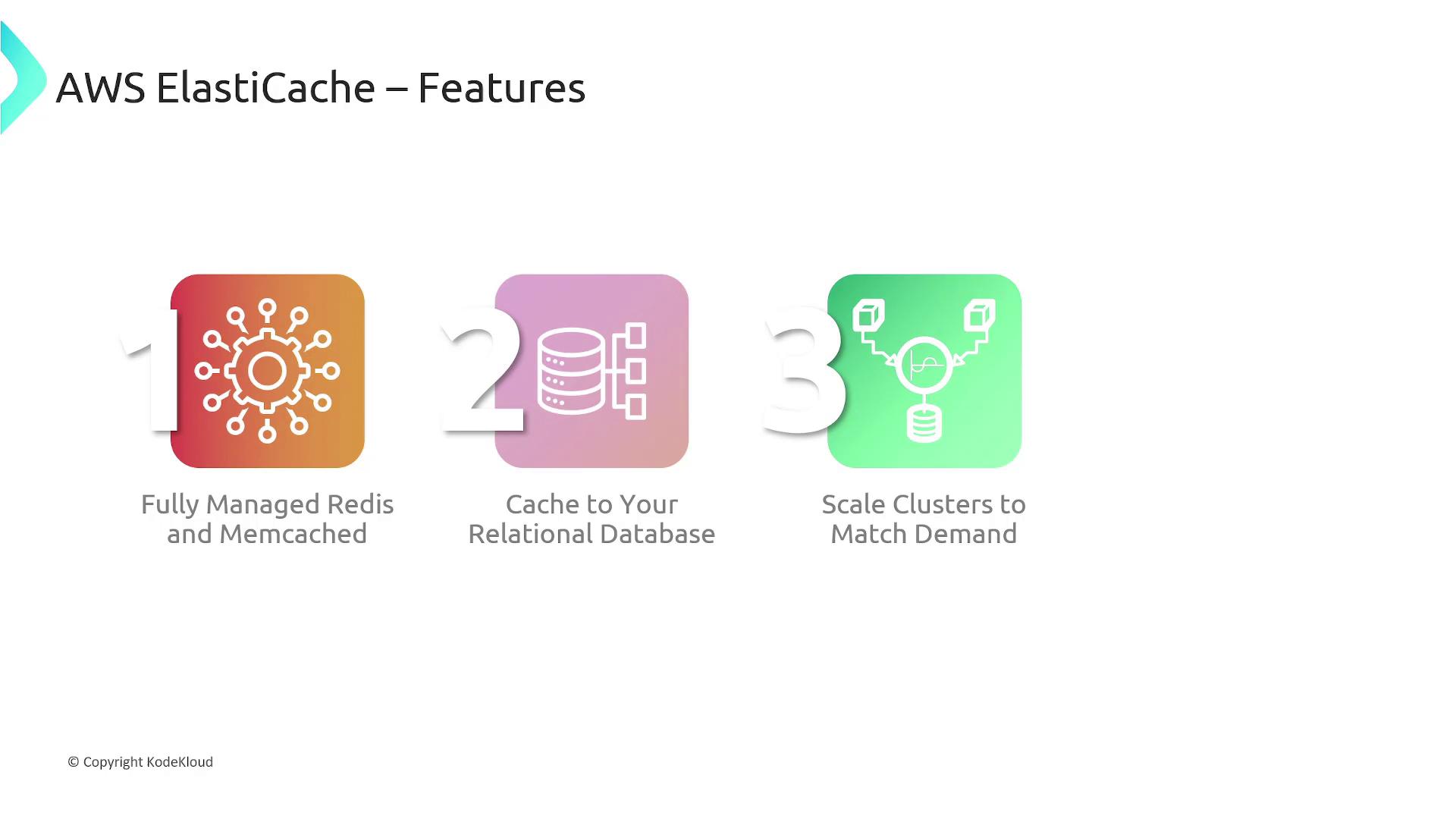
Additionally, ElastiCache’s global datastore feature allows for write operations in one AWS region with read operations from cross-region replica clusters. This capability supports low-latency access and strengthens disaster recovery across multiple AWS regions.
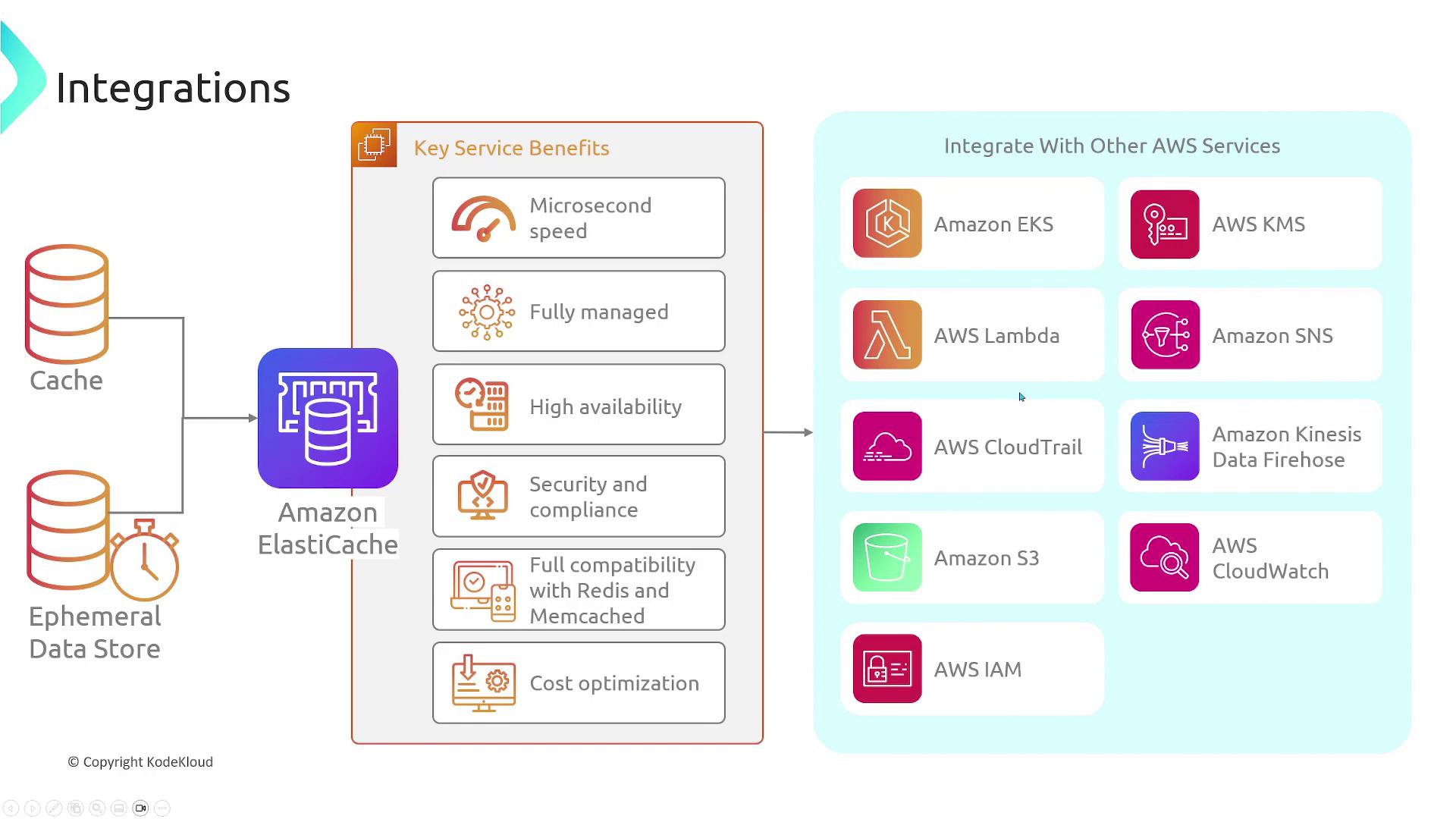
Summary
AWS ElastiCache is a cutting-edge, fully managed in-memory caching service designed to accelerate your applications by minimizing the need for repetitive database queries. With support for both Redis and Memcached, ElastiCache offers microsecond response times, automated scaling, and robust security features.
Key highlights include:
- For Redis: Advanced data persistence, built-in Pub/Sub messaging, and encryption features.
- For Memcached: Simple yet powerful clustering with multi-threaded support and auto discovery.
- Overall Benefits: Reduced latency, minimized database load, and seamless integration with other AWS services for a holistic cloud application environment.
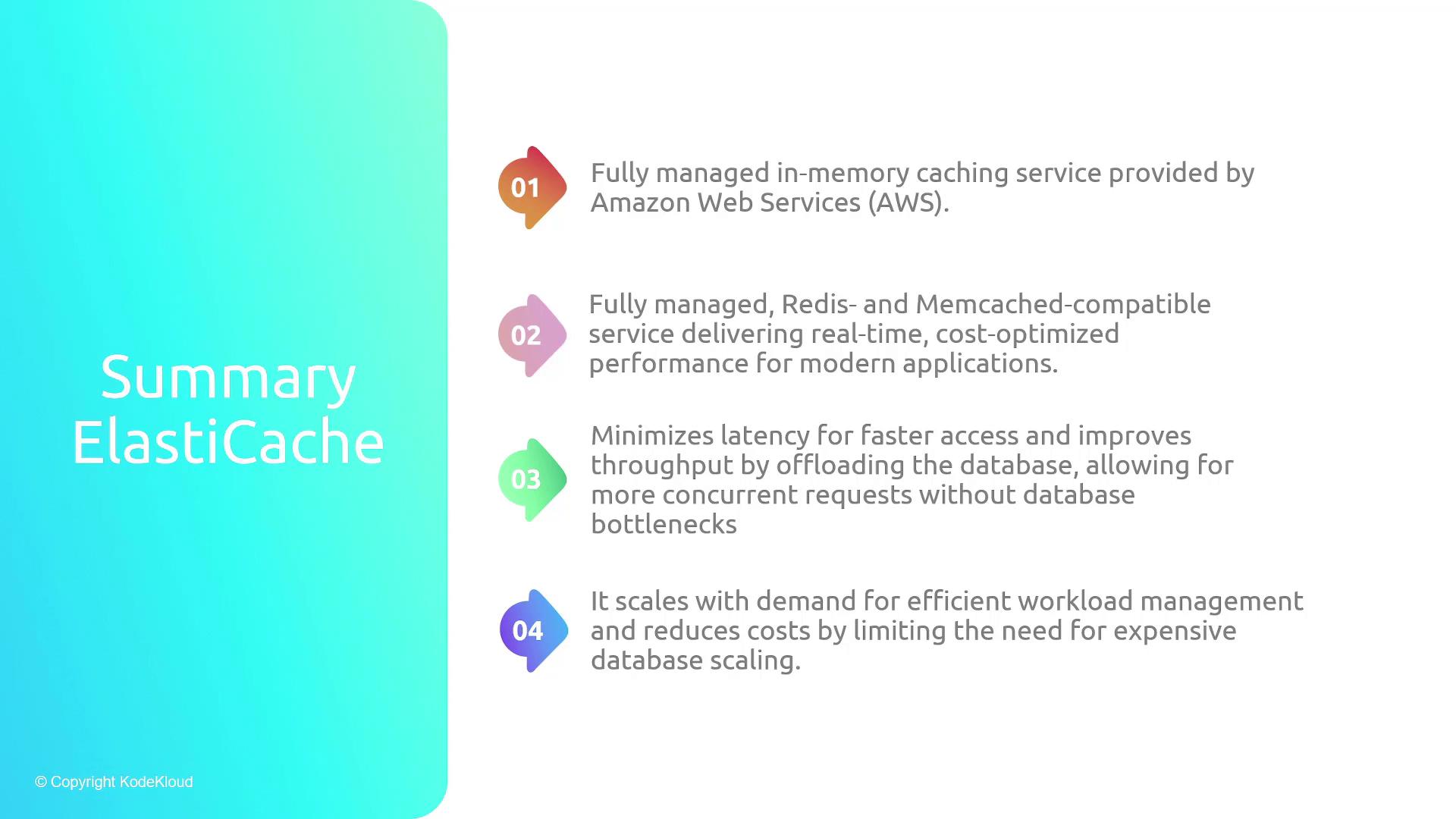
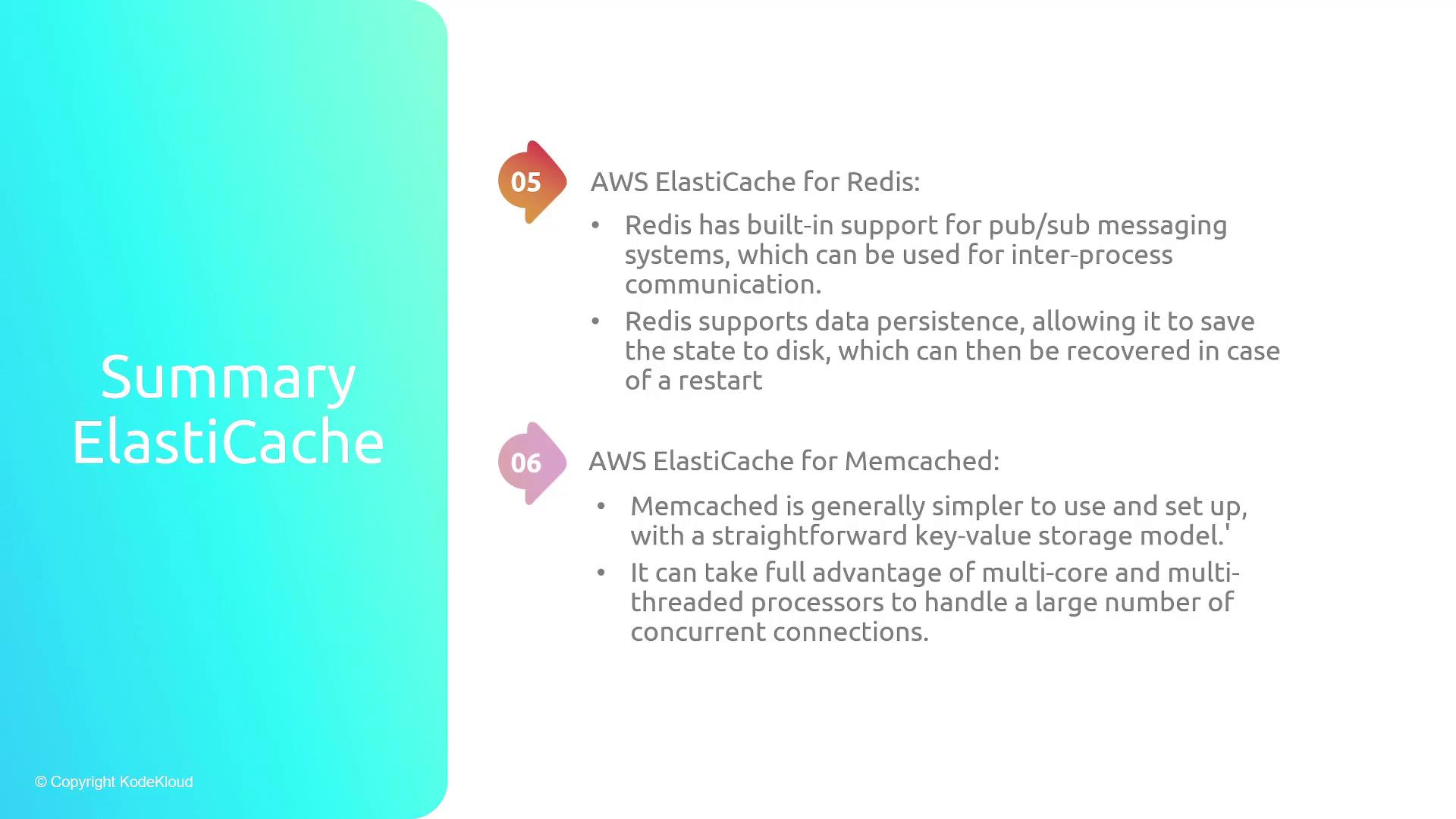
Further Learning
For more detailed information on AWS ElastiCache and related AWS services, explore the AWS Documentation and additional tutorials available online.
Watch Video
Watch video content